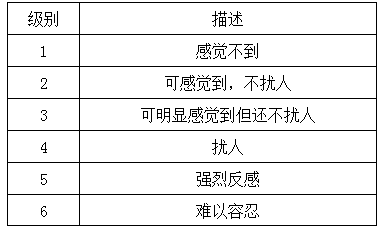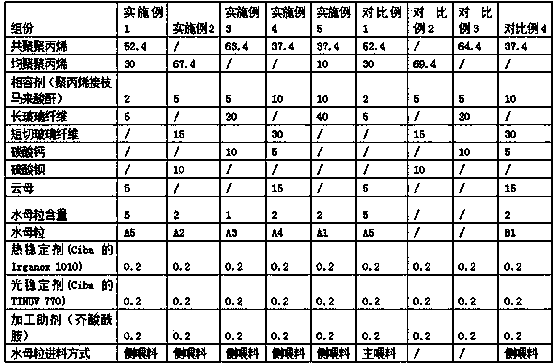Low-odour glass-fiber-enhanced polypropylene composite material and preparation method thereof
A composite material and polypropylene technology, which is applied in the field of low-odor glass fiber reinforced polypropylene composite material and its preparation, achieves the effects of simple and easy preparation method, simple preparation process and low cost
- Summary
- Abstract
- Description
- Claims
- Application Information
AI Technical Summary
Problems solved by technology
Method used
Image
Examples
preparation example Construction
[0046] Preparation of jellyfish pellets:
[0047] Fully mix high-melt-strength polypropylene with different melt strengths and mineral fillers (talc powder, calcium carbonate or barium sulfate) according to the ratio shown in Table 1, extrude strip-shaped polypropylene in an extruder, and then Shred it into polypropylene pre-expanded granules; use water as a foaming agent to foam the polypropylene pre-expanded granules to prepare expanded polypropylene with high melt strength; Polypropylene and water were mixed in a high-speed mixer for 5-10 minutes. By controlling the mixing time, jellyfish particles with the water content shown in Table 1 were prepared and released for use.
[0048] Table 1 The content of each component of jellyfish pellets (weight percent)
[0049]
Embodiment 1-5
[0051] A kind of low odor glass fiber reinforced polypropylene composite material, its raw material formula is as shown in table 3, and its preparation method comprises the following steps:
[0052] (1) Weigh the polypropylene, compatibilizer, mineral filler and additives according to the weight percentage, and mix them in a high-speed mixer for 1-3 minutes; mix them evenly to obtain a premix;
[0053] (2) Put the premix into the main feeding port of the twin-screw extruder, add jellyfish pellets from the side feeding port, and feed the glass fiber from the side feeding port of the extruder, melt extrude, and granulate dry. Its performance test is shown in Table 4.
[0054] Among them, the copolymerized polypropylene in Example 1: AS164 (melt flow rate (230°C / 2.16kg) is 1.5g / 10min) selected from Singapore Polyolefin Company; the homopolymerized polypropylene is selected from EP540V (melt flow rate) of Moplen The rate (230°C / 2.16kg) is 87g / 10min).
Embodiment 2
[0055] Homopolypropylene in Example 2: selected from Sinopec Maoming HC9012-M (melt flow rate (230°C / 2.16kg) is 10g / 10min).
PUM
| Property | Measurement | Unit |
|---|---|---|
| The melt flow rate | aaaaa | aaaaa |
| The melt flow rate | aaaaa | aaaaa |
| The melt flow rate | aaaaa | aaaaa |
Abstract
Description
Claims
Application Information
 Login to View More
Login to View More - R&D
- Intellectual Property
- Life Sciences
- Materials
- Tech Scout
- Unparalleled Data Quality
- Higher Quality Content
- 60% Fewer Hallucinations
Browse by: Latest US Patents, China's latest patents, Technical Efficacy Thesaurus, Application Domain, Technology Topic, Popular Technical Reports.
© 2025 PatSnap. All rights reserved.Legal|Privacy policy|Modern Slavery Act Transparency Statement|Sitemap|About US| Contact US: help@patsnap.com



